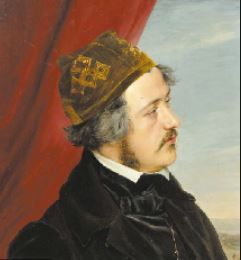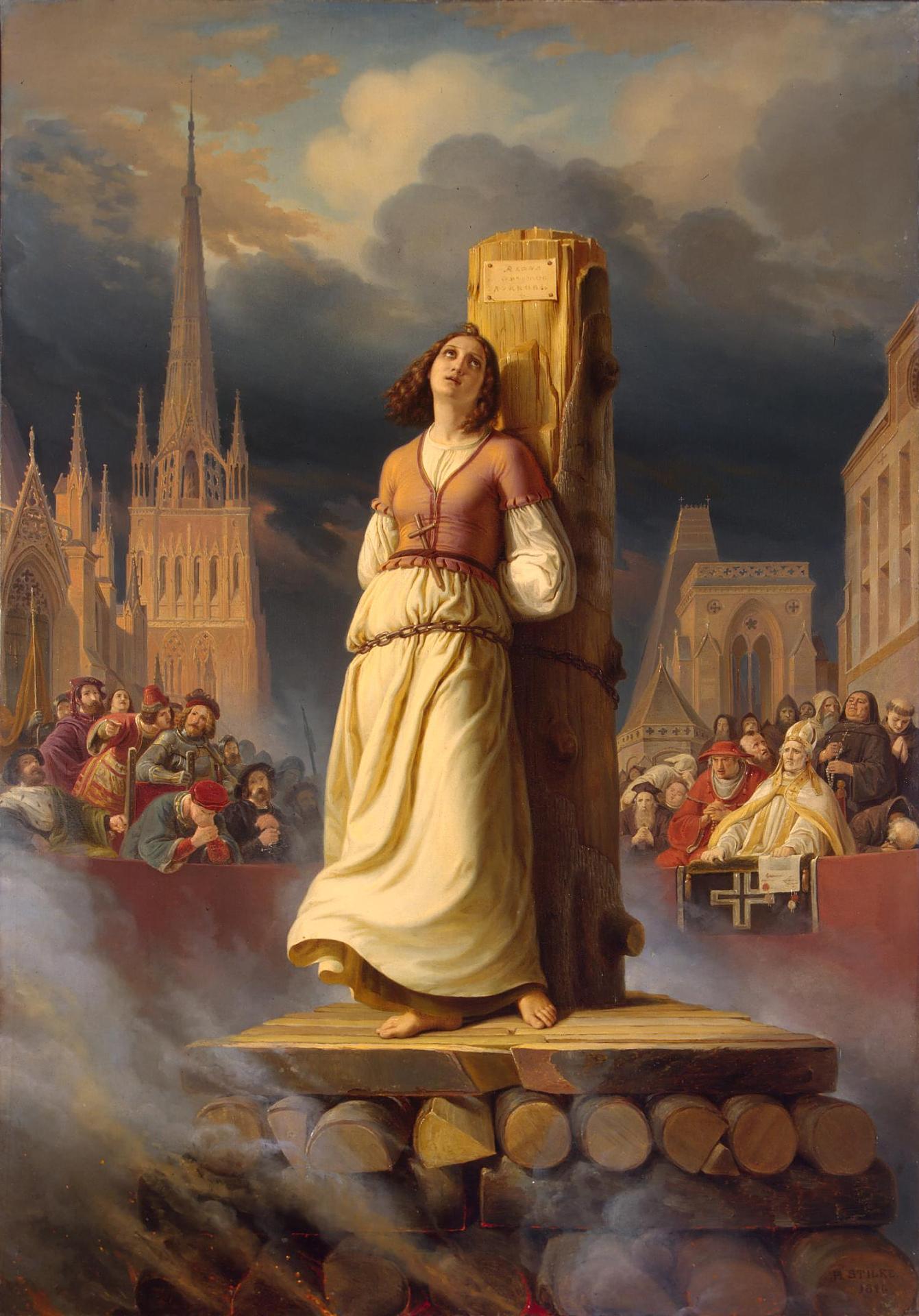Hermann Stilke on:
[Wikipedia]
[Google]
[Amazon]

 Anton Hermann Stilke (29 January 1803, Berlin - 22 September 1860, Berlin) was a German painter; associated with the Düsseldorfer Malerschule. He is best known for his scenes from the life of Joan of Arc.
Anton Hermann Stilke (29 January 1803, Berlin - 22 September 1860, Berlin) was a German painter; associated with the Düsseldorfer Malerschule. He is best known for his scenes from the life of Joan of Arc.
Biography
from '' Salmonsens konversationsleksikon'' @ Projekt Runeberg
Biographical notes
from '' Meyers Konversationslexikon'' @ Retro Bibliothek {{DEFAULTSORT:Stilke, Hermann 19th-century German painters 19th-century German male artists 1803 births 1860 deaths Fresco painters Prussian Academy of Arts alumni Academic staff of the Prussian Academy of Arts Kunstakademie Düsseldorf alumni Painters from Berlin

 Anton Hermann Stilke (29 January 1803, Berlin - 22 September 1860, Berlin) was a German painter; associated with the Düsseldorfer Malerschule. He is best known for his scenes from the life of Joan of Arc.
Anton Hermann Stilke (29 January 1803, Berlin - 22 September 1860, Berlin) was a German painter; associated with the Düsseldorfer Malerschule. He is best known for his scenes from the life of Joan of Arc.
Life and work
He had originally intended to devote himself to agriculture, but was attracted to art instead and began his studies at the Berlin Academy with Carl Wilhelm Kolbe. His first exhibition was held there in 1820. The following year, he transferred to the Kunstakademie Düsseldorf, where he studied with Peter von Cornelius. He also worked as an assistant to , who was painting a "Last Judgment
The Last Judgment, Final Judgment, Day of Reckoning, Day of Judgment, Judgment Day, Doomsday, Day of Resurrection or The Day of the Lord (; ar, یوم القيامة, translit=Yawm al-Qiyāmah or ar, یوم الدین, translit=Yawm ad-Dīn, ...
" at the tax court Tax courts are courts of limited jurisdiction that deal with tax issues.
Notable examples include:
*United States Tax Court, a United States federal court
** List of Judges of the United States Tax Court
**Uniformity and jurisdiction in U.S. feder ...
in Koblenz
Koblenz (; Moselle Franconian language, Moselle Franconian: ''Kowelenz''), spelled Coblenz before 1926, is a German city on the banks of the Rhine and the Moselle, a multi-nation tributary.
Koblenz was established as a Roman Empire, Roman mili ...
. It was left unfinished due to lack of resources. He later alternated between Düsseldorf and Munich, where he decorated the arcade at the Munich Hofgarten with several fresco
Fresco (plural ''frescos'' or ''frescoes'') is a technique of mural painting executed upon freshly laid ("wet") lime plaster. Water is used as the vehicle for the dry-powder pigment to merge with the plaster, and with the setting of the plaste ...
es.
In 1827, he went to Northern Italy, then to Rome, until 1833 when illness forced him to go home. After a brief stay in Berlin, he returned to Düsseldorf and continued his studies with Friedrich Wilhelm von Schadow at the Kunstakademie and worked as a teaching assistant. During that time, he also received a commission to decorate the Great Hall
A great hall is the main room of a royal palace, castle or a large manor house or hall house in the Middle Ages, and continued to be built in the country houses of the 16th and early 17th centuries, although by then the family used the great ...
at Stolzenfels Castle
Stolzenfels Castle (german: Schloss Stolzenfels) is a former medieval fortress castle ("Burg") turned into a palace, near Koblenz on the left bank of the Rhine, in the state of Rhineland-Palatinate, Germany. Stolzenfels was a ruined 13th-century ...
; creating murals of the "Six Knightly Virtues"; a project he completed in 1846. He went back to Berlin in 1850, and was named a professor at the academy in 1854. He had been a member there since 1835.
He died in 1860, at the age of fifty-seven, and was interred at the St.-Matthäus-Kirchhof. His grave has not been preserved.
One of the pupils he met at the Kunstakademie, Hermine Peipers, became his wife in 1835 and was known for her watercolors. Their son, , was a bookseller and publisher.
References
Further reading
*External links
Biography
from '' Salmonsens konversationsleksikon'' @ Projekt Runeberg
Biographical notes
from '' Meyers Konversationslexikon'' @ Retro Bibliothek {{DEFAULTSORT:Stilke, Hermann 19th-century German painters 19th-century German male artists 1803 births 1860 deaths Fresco painters Prussian Academy of Arts alumni Academic staff of the Prussian Academy of Arts Kunstakademie Düsseldorf alumni Painters from Berlin